Memory of Flying Tigers honored
Updated: 2015-04-20 09:50
By Li Yang(China Daily)
|
||||||||
The American Volunteer Group has legendary status in China, and the US pilots who flew as members of the Chinese air force have now been honored in the town that was their main center of operations, as Li Yang reports from Guilin, Guangxi Zhuang autonomous region.
Editor's note: This is the third in a series of special reports about the experiences of foreigners who either lived or served in China between 1937 and 1945.
China has paid tribute to the 1st American Volunteer Group, better known as the Flying Tigers, a team of US pilots who assisted the fight against Japanese occupation during World War II, by opening a heritage park in Guilin in the Guangxi Zhuang autonomous region.
Vice-Premier Liu Yandong hosted the opening ceremony with Guangxi Party chief Peng Qinghua, and representatives from the United States.
The park - which covers an area of 17 hectares, and comprises a museum, a cave command post on a nearby mountain, barracks, hangars and flight strips - was funded by the Flying Tigers Historical Organization, a nonprofit group in Groveland, California. It was constructed on the site of the former Yangtang airport, which was built by the locals and the US volunteers in 1942 under extremely dangerous conditions.
Local villagers, governments and the FTHO have donated hundreds of relics related to the Flying Tigers to the museum, and Florence Lee Fang, the FTHO's honorary president, will donate a C-40 transport plane, the dominant model used by the US army air forces in the Pacific theater, which will soon go on permanent display.
Liu's presence at the ceremony demonstrated the significance China attaches to the Flying Tigers' legacy in the 70th anniversary year of the victory over the axis powers.
A global dream
Peace is not only a "China Dream", but also a dream of all peoples around the world, according to FTHO Chairman Major General James Whitehead. "The park is an important beginning to educate the people and their children about the history of a time when two peoples fought together for a common goal, and about the heroes."
Liu said: "Recalling the history of when the people of China and the US fought evil side by side is of great importance for the establishment of new type of big-power relationship between the two countries. I hope China and the US can increase exchanges and cooperation, continue interpersonal friendships, and make a larger contribution to world peace."
Peng hopes Guilin can continue to expand construction of the park and "make it an important window to foster mutual understanding between Guangxi and the US, and to deepen bilateral cooperation in economics, trade, culture and tourism".
The Flying Tigers squadrons, led by Lieutenant General Claire Chennault, were set up in Rangoon, Myanmar, in 1941 to resist the Japanese invasion of Asia, and to safeguard the air transport route, known as the "Hump course", which connected Southwest China with the rest of South Asia.
In June 1942, Chennault arrived in Guilin with dozens of P-40 Warhawk fighter planes and built three military airports in the city, which stood on the front line with the Japanese army.
Chennault trained, organized and inspired his pilots. He taught them to fight in pairs; to use speed and diving power to make a pass, shoot, and break away. With the success of the early warning net that Chennault had devised, the American Volunteer Group destroyed almost 300 enemy aircraft, while only losing 12 of their own in just six months.
On July 4, 1942, the group was disbanded, and replaced by the 23rd Fighter Group of the United States Army Air Forces, which was itself later absorbed into the US 14th Air Force with Chennault as commander.
In the two or so years that followed, the 14th Air Force destroyed more than 2,600 enemy aircraft, sank or damaged 2,230,000 metric tons of enemy merchant ships, and 45 navy vessels, and killed more than 66,700 enemy troops in South China - a remarkable achievement for the smallest and most remote air force of WWII.
Chennault, who withdrew from Guilin with his pilots in October 1944, ended his memoir Way of a Fighter with these words: "It is my fondest hope that the sign of the Flying Tiger will remain aloft just as long as it is needed and that it will always be remembered on both shores of the Pacific as the symbol of two great peoples working toward a common goal in war and peace."
At the ceremony, Nell Calloway, Chennault's granddaughter and director of the Chennault Aviation and Military Museum in Monroe, Louisiana, said: "We come together under the sign of the Flying Tigers, and my grandfather's words hold as much importance now in 2015 as they did in 1949 (when Chennault's book was published). And we must work together toward our common goals: Prosperity, stability, respect and understanding."
Since 1983, hundreds of Flying Tiger pilots and their relatives have visited the site of the former airport at Yangtang and spoken with the local villagers, hundreds of whose ancestors died during the construction of the facility, either while working in the quarry or during aerial bombardments by the Japanese air force.
Thanks from far away
When he was 9, Long Fenggao, an 80-something retired policeman who attended the opening ceremony, spotted an injured US pilot in a rice paddy, and acted as a guide for villagers to carry the pilot to the cave command post at Yangtang airport. Whenever Flying Tiger pilots and families visit Guilin, Long always appears and greets them emotionally like old friends, often with tears in his eyes.
"All my family died in the Japanese bombings. The Flying Tigers helped me to take revenge. I regard their families as my own family," Long said. "I am honored to have helped save that injured US pilot, even though I don't know his name."
In the early 1950s, Long volunteered to fight in the Korean War but the cease-fire was signed before he was sent to the front. When asked about the difference between the US soldiers he greets so effusively in Guilin and the ones he would have fought on the Korean Peninsula, he responded seriously: "The US soldiers under President Roosevelt were good, the soldiers under President Truman were bad."
Another local resident, a reserved villager called Jiang Jun who lives deep in the mountains, was unable to attend the opening ceremony, but in 1996, he and his brother-in-law Pan Qibing discovered a crashed WWII-era B-24 bomber in the mountains that had been the Flying Tigers' home in China. The bomber, which had a crew of 10, hit the 2,000-meter-high Mao'er Mountain on the night of Aug 31, 1944, after bombing the Japanese fleet at Kaoshiung port in Taiwan.
Pan traveled to the US after the two men received a thank-you letter from then-President Bill Clinton for rescuing a US reporter who fell down a cliff while covering the retrieval operation. Jiang applied for the visa too. But he was turned down, and a US visa official told him: "What you have done is already history." Instead of traveling, Jiang stayed home to care for his sick, elderly mother.
In 2005, however, he was invited to a reception for the children of Flying Tiger pilots organized by the local government in his hometown. "I didn't know the old US pilot who embraced me so tightly, but we both shed tears. He said 'thank you' again and again," Jiang recalled. "I just smiled in return. I think that old man's hug was much better than the US president's thank you letter."
With the help of the FTHO and the local government, the project to build the museum started in 2007, but the complexity of receiving donations from overseas resulted in the construction work progressing intermittently for eight years.
The Chinese people's fight against the Japanese army and their sacrifices in WWII are largely unknown in the Western world. "Were it not for the Chinese battlefield, Japan would have sent more troops to fight the US in the Pacific," said Tom Palmer, a retired US Air Force pilot from Auburn, California, who was visiting the heritage park. "It is meaningful to have the park to tell young Americans and Chinese about the mutual assistance of the Chinese and American peoples."
As an 8-year-old, Herman Leong, a Hawaiian-born Chinese-American who is also known as Liang Riming, witnessed the Japanese attack on Pearl Harbor in 1941. He later served as a navigator in the US Air Force from 1956 to 1968.
"Although I am third-generation US-born, I am always concerned about the development of China," said Leong, who gave stirring renditions of the Chinese and US national anthems at the park's opening ceremony. "The Flying Tigers were my childhood heroes. Their experiences in China tell us that the two peoples share the same belief in peace. And we have so many common interests today. There is no reason for China and the US not to become good partners to safeguard world peace."
While visiting the newly opened museum, Jay Vinyard, a 93-year-old retired pilot who regularly flew the dangerous Hump route in the 1940s to deliver goods to occupied China, was asked about the lessons he had learned during the war. The elderly man looked thoughtful for a while, and then replied: "In war, luck is your best asset."
Huo Yan, Li Ziyu and Nell Calloway contributed to this story.
Contact the writer at liyang@chinadaily.com.cn
(China Daily 04/20/2015 page20)
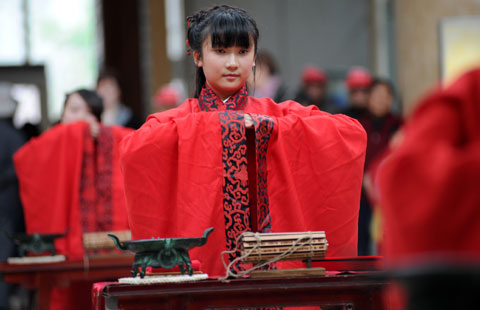
 Girls celebrate adulthood in NW China
Girls celebrate adulthood in NW China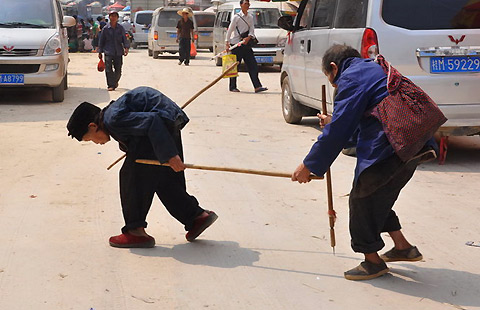
 Couple linked by a stick
Couple linked by a stick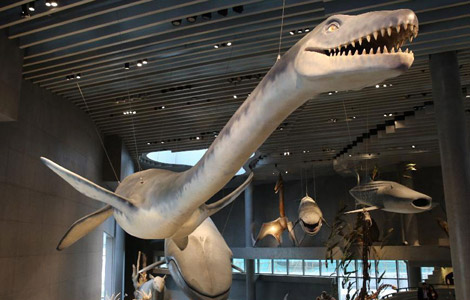
 Natural History Museum opens in Shanghai
Natural History Museum opens in Shanghai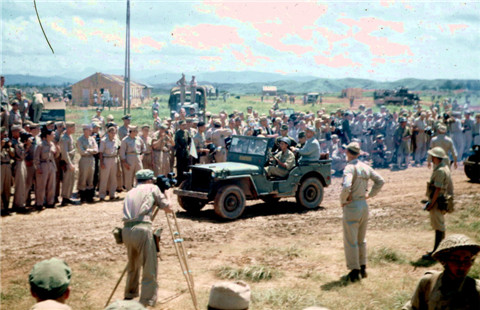
 Japanese WWII surrender video debuted at China museum
Japanese WWII surrender video debuted at China museum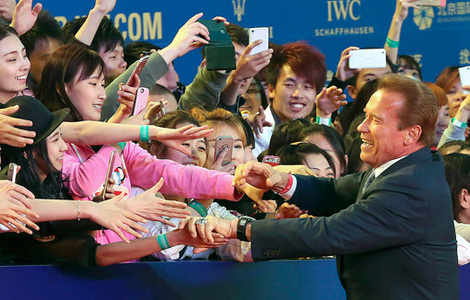
 Beijing film festival draws top moviemakers, Oscar winners
Beijing film festival draws top moviemakers, Oscar winners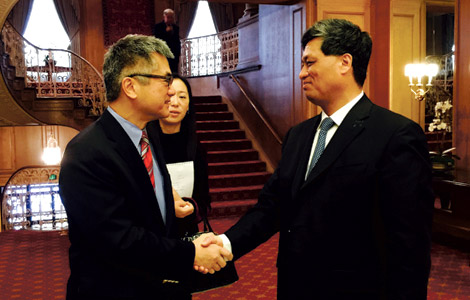
 Across America over the week (from April 10 to 16)
Across America over the week (from April 10 to 16)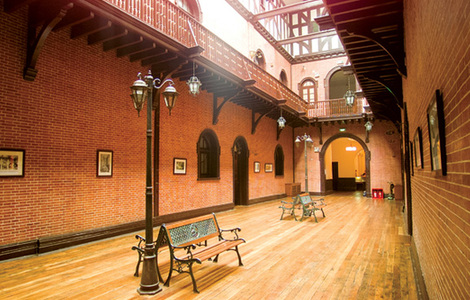
 Historic hotels offer more than a view
Historic hotels offer more than a view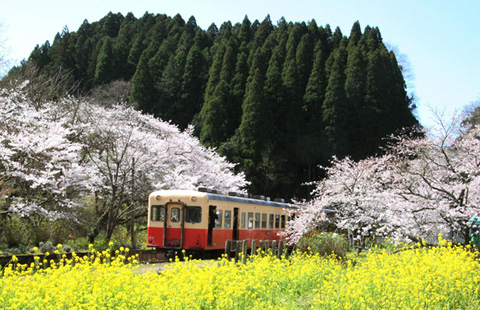
 Top 10 foreign holders of US Treasuries
Top 10 foreign holders of US Treasuries
Most Viewed
Editor's Picks

|

|

|

|

|

|
Today's Top News
AIIB looks to be efficient, 'green'
Bridging cultures with laughter and song
Central bank lowers reserve ratio
Envoy sees many benefits from Xi's Pakistan visit
China concerned at reports of New Zealand-US plan to spy on diplomats
Old Summer Palace may sue over controversial replica
China and the 2016
US election
World Bank, IMF: will work
with AIIB
US Weekly

|

|







